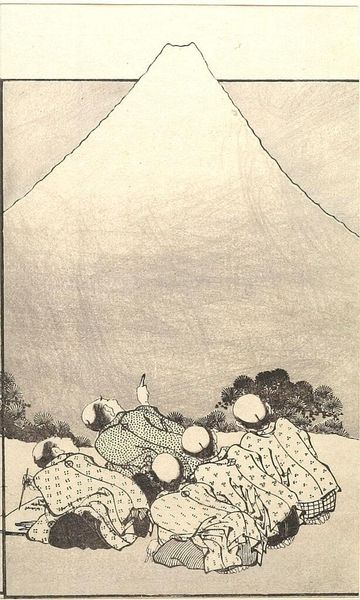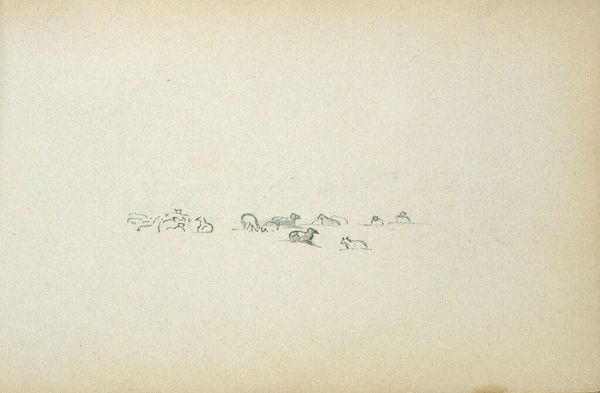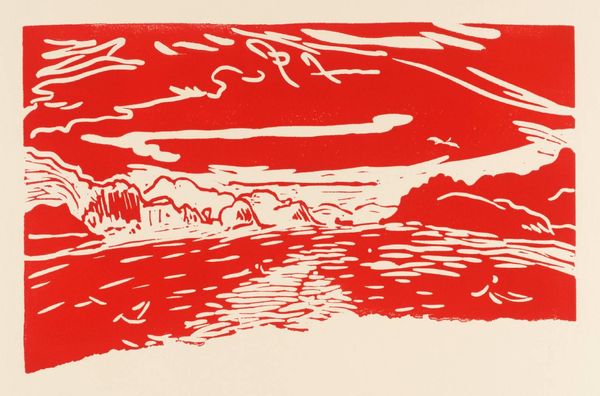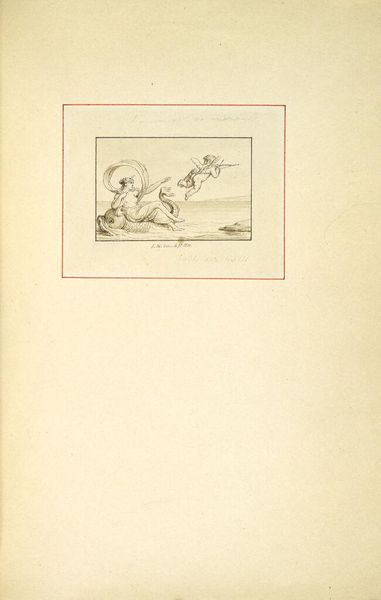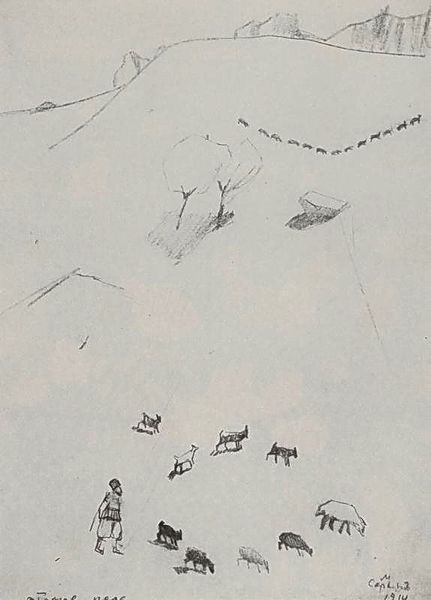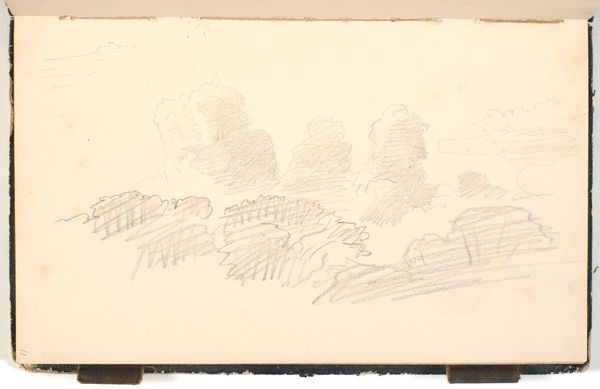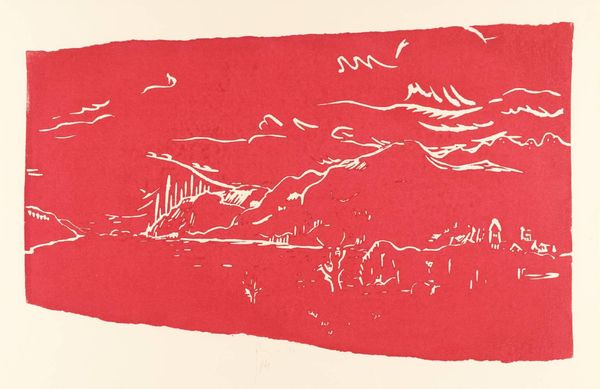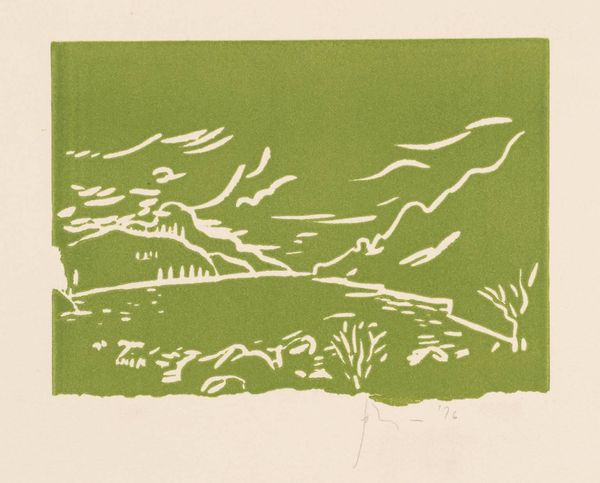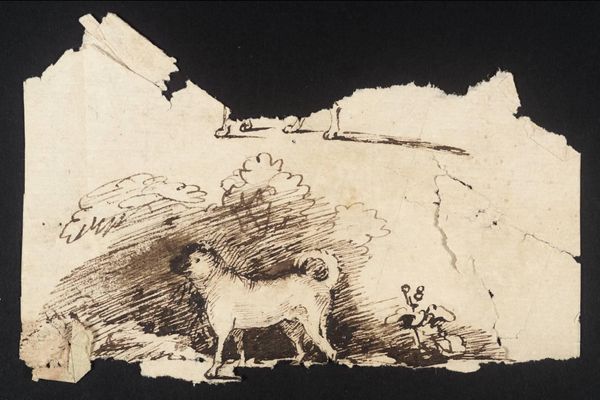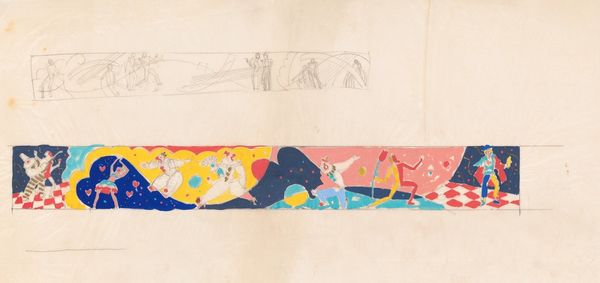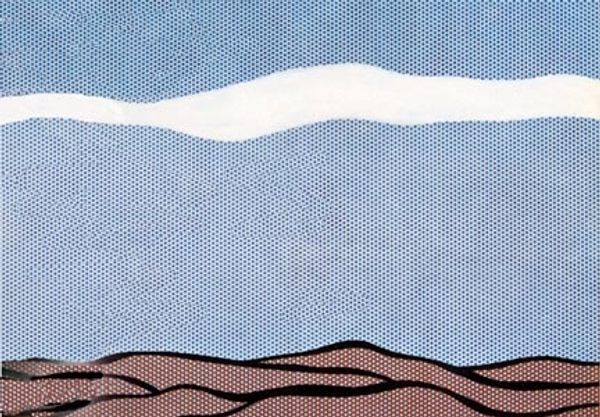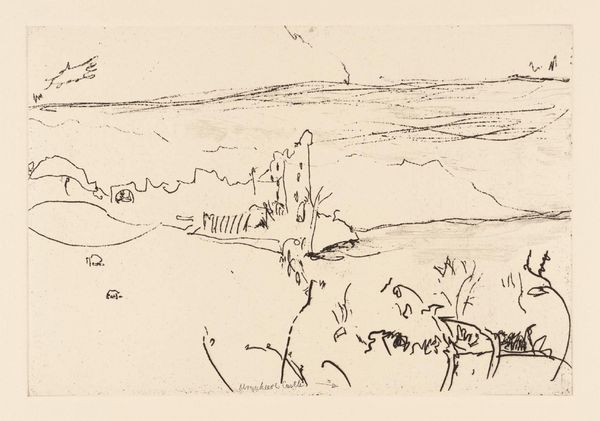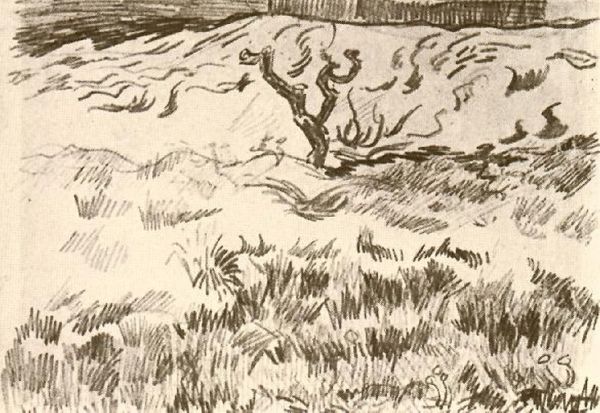
Illustrations for Mikhail Stelmakh's book "In the Hedgehog's Windmill" 1956
0:00
0:00
watercolor
#
landscape
#
soviet-nonconformist-art
#
figuration
#
watercolor
#
flat colour
#
folk-art
#
watercolour illustration
#
cartoon style
Copyright: Hryhorii Havrylenko,Fair Use
Curator: This whimsical artwork comes to us from 1956, one of Hryhorii Havrylenko's illustrations for Mikhail Stelmakh's book, "In the Hedgehog's Windmill". It appears to be a watercolor on paper. Editor: The flattened perspective and limited palette really create a folksy, almost naive feel. The scene with the gathering of mushrooms beneath the stormy sky certainly exudes a sense of quiet, perhaps a little melancholy. Curator: Havrylenko was operating within a specific Soviet context, where illustration played a crucial role in shaping cultural values, particularly for children. Picture books and illustrations offered fertile ground to disseminate ideas, promote literacy, and even idealize certain lifestyles. This artwork, as an illustration, held a position far beyond mere decoration. Editor: It's interesting that you mention 'idealize.' While it doesn't explicitly shout socialist realism, one wonders about the book’s narrative in promoting values linked to labor. I wonder if it romanticizes gathering. This piece also points to a subtle tension. The very act of depicting such scenes in watercolor might subtly push against the monumental forms typically preferred by the period. Watercolor carries associations of intimacy and domesticity, which is fascinating given its public purpose as an illustration. Curator: Absolutely. There's a dialogue happening, maybe an implicit critique of the dominant artistic mode through the choice of materials and aesthetic. This artwork also serves as a visual marker of childhood in the Soviet era. And, from the vantage point of the 21st century, it’s another node in an economy of consumption. What type of materials were available, and how might limitations influence the look and production pipeline? Editor: These mushroom figures also point toward themes of folklore. How were fairy tales and nature employed, transformed, and used by Soviet culture in an urbanizing world? The narrative of childhood becomes deeply embedded into the landscape in this work. Curator: Right. I'm really taken by the details when you begin to look carefully into the history. So many decisions both formal and contextual come to the forefront, challenging our perception of something we initially see as simply 'charming'. Editor: Indeed, understanding that wider social, political, and artistic backdrop, deepens our view, and prevents a simplified reading of even seemingly benign pictures.
Comments
No comments
Be the first to comment and join the conversation on the ultimate creative platform.
